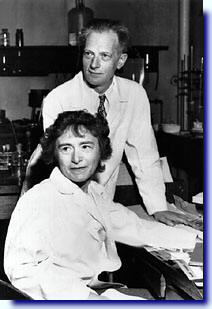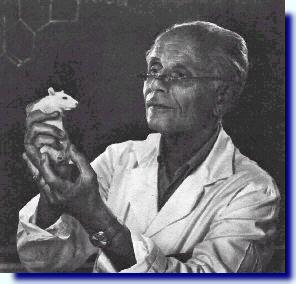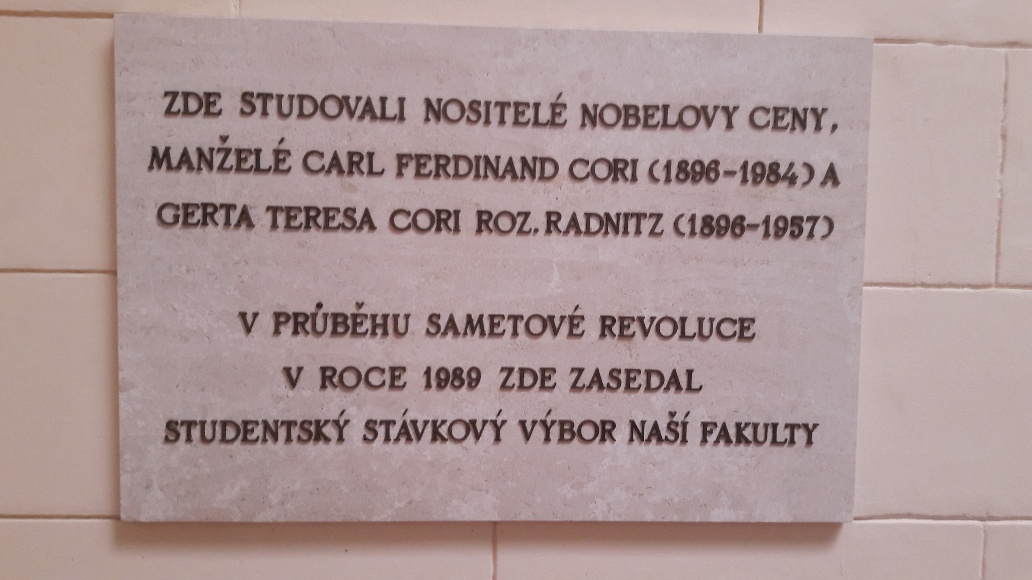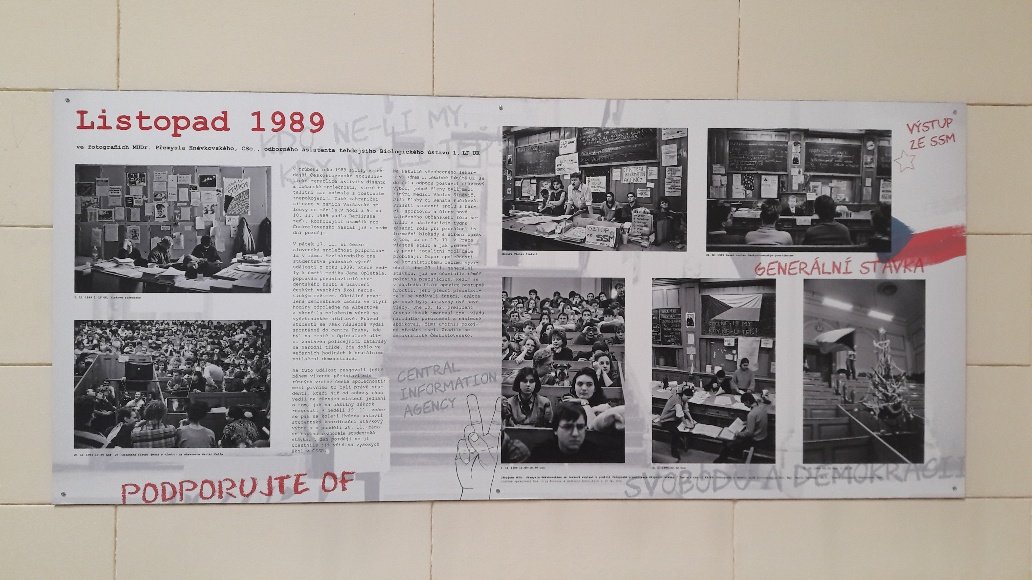The building of the Institute of Medical Chemistry opened in autumn of 1879. After the division of the Prague university into a Czech and a German part, which took place in 1882–1883, the Institute belonged to the Faculty of Medicine of the German University until 1945. During this period, a number of important personages of contemporary science worked here, including
Professor Hans Meyer (1871–1942), who had also served as dean of the Faculty of Natural Sciences. Although his chair did not belong to the Faculty of Medicine, his lectures were attended by many medics. The impact of his work was far-reaching and transcended even the confines of Europe. For instance, his Lehrbuch der organisch-chemischen Methodik, a textbook of organic chemistry in three volumes, appeared in many editions, was translated into French and English, and used all over the world. In was published in the United States even during the Second World War. Meyer’s research focused on the chemical structure of natural substances and preparation of their derivatives. He developed a method for determining the nature and number of alkyl groups attached to nitrogen (this Herzig–Meyer method was used until late 1950s) and was investigating the physical chemistry of organic molecules and reactions in organic chemistry. His course in experimental chemistry used to be attended by 420–630 students each term. Another important personality of the institute was
Franz Hofmeister Jr. (1850–1922), professor of medical chemistry and pharmacology. In autumn of 1896, he was appointed professor of physiological chemistry at the medical faculty in Strasburg and since 1909, he held the chair of pharmacology at the medical faculty in Würzburg. He was an important pioneer of physiological chemistry and the first experimental pharmacologist in the Austrian Monarchy. A memorial plaque dedicated to him is found on the building at U Nemocnice 4, since he worked in both buildings. Another remarkable person who followed in Hofmeister’s footsteps was
Karl Hugo Huppert (1831–1904), who received his habilitation at the faculty of medicine in Leipzig, where he also became extraordinary professor, and since 1872 was a full professor of applied medical chemistry in Prague. Huppert participated in the development of the Institute of Medical Chemistry at its present location at U Nemocnice 5. His Anleitung zur qualitativen und quantitativen Analyse des Harns (Wiesbaden 1881) appeared in eleven editions. He was appointed a court counsellor and in 1900 also a full member of the Society for the Development of German Science, Arts, and Literature. Huppert served as dean of the German Faculty of Medicine and rector of the German University in Prague. After Huppert, the institute was headed by
Richard Ritter von Zeynek (1869-1945), who later also became dean of the Faculty of Medicine and rector of the German University.
Some former students of the Institute had also achieved remarkable success in their professional careers. These include especially Carl Ferdinand Cori (1896–1986) and Gerta Theresa Cori, née Radnitz (1896–1957), a husband and wife team of Prague natives, graduates of the German Faculty of Medicine in Prague. In 1947, they received the Nobel Prize for explaining how human body uses lactate formed by metabolization of stored polysaccharide glycogen in muscle cells. Nowadaysm, the main lecture hall of the institute bears their name. Another famous student of the institute was Hans Hugo Bruno Selye (1907–1982), a native of Vienna and graduate of the Faculty of Medicine of the German University in Prague, who formulated the theory of adaptation syndrome and stress reaction. He was the first to describe the hypothalamus–pituitary regulation of the production of corticosteroids in adrenal glands.

Carl Ferdinand & Gerta Theresa Coriovi
|

Hans Hugo Bruno Selye
|
In 1945, the Institute of Medical Chemistry of the German Faculty of Medicine was transformed into the Second Institute of Medical Chemistry, which was in 1972 renamed Second Institute of Medical Chemistry and Biochemistry. The most important personages of the institute during this period included Antonín Hamsík (1878–1963), whose work focused on the study of haemoglobin and its derivatives, Antonín Felix Richter (1896–1979), who published a number of studies on nitrous compounds in melanins, and Jan Šula (1904–1994), who laid the foundations of modern Czech experimental oncology by his research on chemical carcinogens.
In the past four decades, the Institute started to ever more clearly focus on experimental oncology. Emphasis on this research area was promoted by Jiří Duchoň (1927–2009), whose work in biochemical research of the melanoma and melanogenesis was in late 1960s, 1970s, and 1980s at the top of European science of the time and the Institute organised important international conferences focused on this subject. In 2002, this trend led to another change in the name of the institute, which was henceforth called the Institute of Biochemistry and Experimental Oncology. At the turn of the millennium, the institute had undergone an extensive update: the building was refurbished and technical facilities (instruments) updated. Currently, work at the institute focuses on the study of processes which lead to the development and progression of malignant tumours.
An important part of the history of the Institute is the fact that during the Velvet Revolution in 1989, it became the headquarters of the students’ strike committee and served as a hub of other civic activities.

A memorial plaque commemorating important events in the history of the institute

Recollection of the Velvet Revolution, when the Cori Hall functioned as headquarters of the strike committee of the Faculty of Medicine.
Heads of the institute after 1945:
- Academician prof. MUDr. Antonín Hamsík, DrSc. in 1945 – 1948 ·
- Prof. MUDr. Antonín Felix Richter, DrSc. in 1948 – 1959 ·
- Prof. MUDr. et MVDr. Jan Šula, DrSc. in 1959 – 1970 ·
- Prof. MUDr. Jiří Duchoň, DrSc. in 1970 – 1995
- Doc. MUDr. Bohuslav Matouš, CSc. in 1995 – 2007
- Prof. MUDr. Aleksi Šedo, DrSc. since 2007





